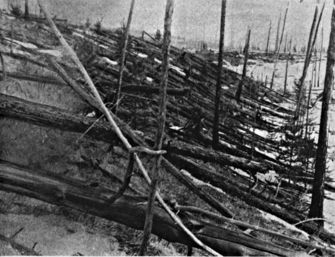« Prev Next »
Las t April, the European air transit system found itself completely gridlocked by an unforeseen natural event: the eruption of the Eyjafjallajökull volcano in southern Iceland. Gushing ash cloud up into the atmosphere, the Eyjafjallajökull (pronounced "AY-uh-fyat-luh-YOE-kuutl-uh") eruption blocked airspace visibility over northern and western Europe for six consecutive days. News outlets covering the incident dispatched reporters to airports from Oslo to Prague to interview grounded disgruntled passengers, making it easily the most famous volcanic event of 2010. But 64 volcanoes erupted in total last year, with the most devastating occurring at Indonesia's Mount Merapi in October. In comparison to its coverage of the non-fatal inconveniencing of travelers, the media's response to the Indonesian disaster seems disproportionate.
t April, the European air transit system found itself completely gridlocked by an unforeseen natural event: the eruption of the Eyjafjallajökull volcano in southern Iceland. Gushing ash cloud up into the atmosphere, the Eyjafjallajökull (pronounced "AY-uh-fyat-luh-YOE-kuutl-uh") eruption blocked airspace visibility over northern and western Europe for six consecutive days. News outlets covering the incident dispatched reporters to airports from Oslo to Prague to interview grounded disgruntled passengers, making it easily the most famous volcanic event of 2010. But 64 volcanoes erupted in total last year, with the most devastating occurring at Indonesia's Mount Merapi in October. In comparison to its coverage of the non-fatal inconveniencing of travelers, the media's response to the Indonesian disaster seems disproportionate.
A report I heard on US National Public Radio (NPR) first brought this discrepancy to my attention. According to journalist Joe Palca, "Violent natural events typically only become news when they affect people." In regard to earthquakes, he points out that 13 earthquakes were technically more powerful than the one in Haiti, but political, economic and infrastructure-related variables left Haitians unprepared in a way that demanded worldwide attention. But I've also been thinking about the attention the Haitian disaster received initially, and how that coverage has tapered off despite the outbreak of a cholera epidemic. I agree with Palca that mainstream media sources seem to privilege sensational natural events, but I also must believe that the Indonesians living near Mount Merapi found themselves to be equally "affected" by their volcano's eruption, as would anyone experiencing a similar event.
 These encounters between communities, natural disasters and journalists made me begin to think of the notion of chance, specifically one natural event where the arbitrary location made all the difference in the world: the Tunguska event. One summer morning in 1908, a 220-million-pound space rock entered Earth's atmosphere above Tunguska, Siberia, at a speed of an estimated 33,500 miles per hour (~53,914 kilometers per hour). The pressure and heat of entry caused the rock to explode, releasing enough energy to knock down 80 million trees over a 830 square-mile (~2,150 square-kilometer) area.1 The extensive ecological damage can be seen in this 1927 image, but there was only one human casualty, a man who fell down from the force of the explosion and passed away the next day.
These encounters between communities, natural disasters and journalists made me begin to think of the notion of chance, specifically one natural event where the arbitrary location made all the difference in the world: the Tunguska event. One summer morning in 1908, a 220-million-pound space rock entered Earth's atmosphere above Tunguska, Siberia, at a speed of an estimated 33,500 miles per hour (~53,914 kilometers per hour). The pressure and heat of entry caused the rock to explode, releasing enough energy to knock down 80 million trees over a 830 square-mile (~2,150 square-kilometer) area.1 The extensive ecological damage can be seen in this 1927 image, but there was only one human casualty, a man who fell down from the force of the explosion and passed away the next day.
If the space rock had fallen hours later and hit a highly populated location, the story would have been completely different. But instead it exploded over Tunguska, Siberia, to become a natural disaster now regarded as a historical oddity, but never quite as news.
Image Credits: Wikimedia
The first image is a composite map of the location of the ash cloud from the Eyjafjallajökull volcano (the red dot) from 14 – 25 of April 2010. The second is a photograph taken by mineralogist Leonid Kulik on a 1927 expedition to Tunguska nearly two decades after the explosion.
1. Phillips, T. "The Tunguska Impact — 100 Years Later." NASA Science News. June 30, 2008.






















